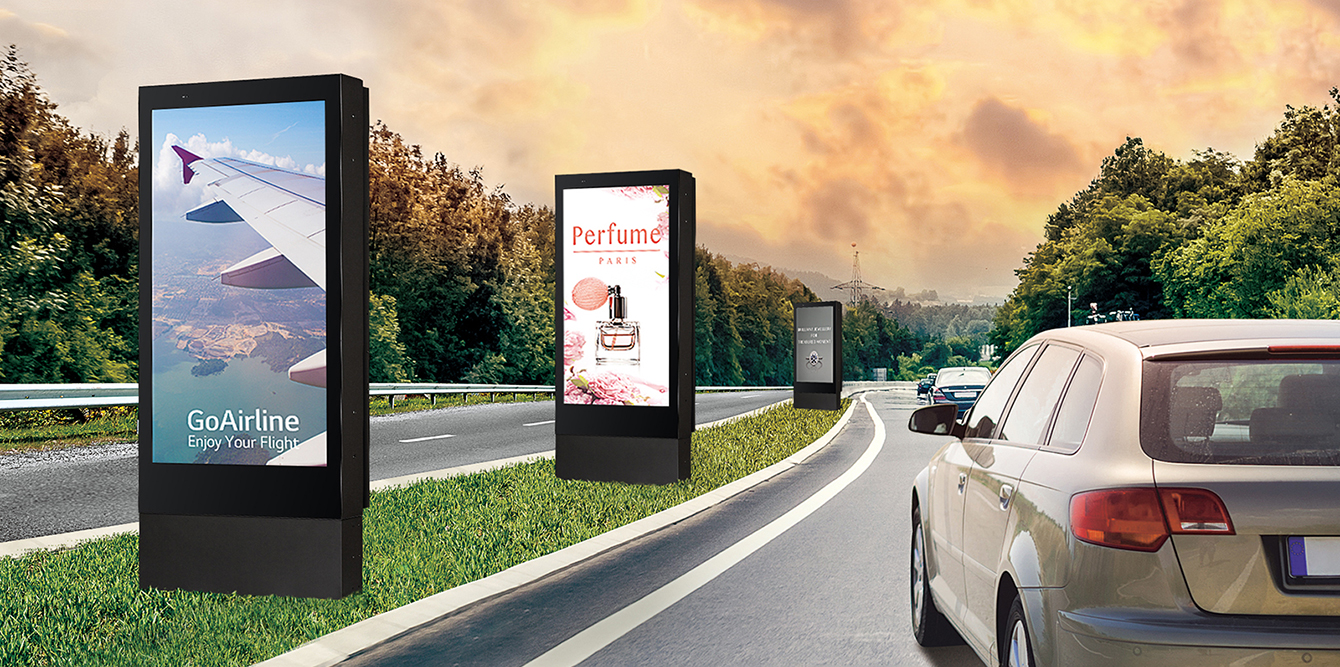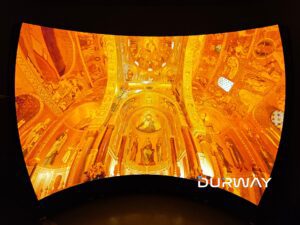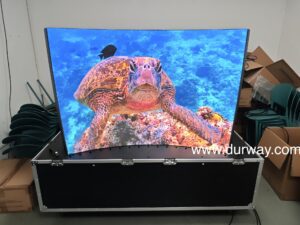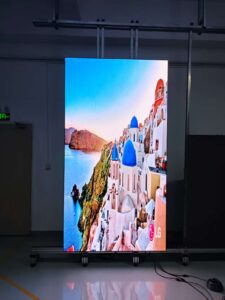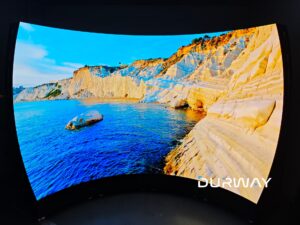Investing in outdoor LED signage is not a short-term decision. Modern LED outdoor display systems are engineered to operate reliably for ten years or more, even under harsh environmental conditions. To protect your capital outlay, optimize uptime, and maximize audience engagement, you need both the right technology and a partner who brings proven expertise. Below, we delve deeply into eight critical considerations that will help you choose the ideal outdoor LED signage solution and provider.
1. Environmental Ruggedness
Outdoor installations face a unique set of challenges: temperature swings—from sub-zero winters to searing summer heat—prolonged UV exposure, high winds, moisture intrusion, airborne dust, and even salt corrosion in coastal zones. A truly ruggedized LED display will combine:
Advanced thermal management. Look for hybrid heat sinks or liquid-cooled designs that dissipate heat both from the LED diodes and the power/control electronics. Ask for thermal simulation data to confirm performance at your site’s peak ambient temperature.
High ingress protection (IP) rating. IP65 is the industry minimum for dust-tight and water-jet protection; IP67 or IP68 may be necessary in flood-prone areas. Verify that all seams, cable entries, and service doors use industry-standard gaskets and seals.
Corrosion-resistant construction. Powder-coated steel, anodized aluminum, or stainless-steel cabinets resist oxidation and maintain structural integrity. For beachfront or industrial environments, ensure marine-grade coatings or specialized alloys.
Shock & vibration testing. Some vendors subject their modules to MIL-STD-810G or equivalent to validate performance under constant vibration (e.g., on bridges or near heavy equipment).
By demanding detailed environmental test reports and certifications, you safeguard both display uptime and long-term ROI.
2, End-to-End Support & Project Management
Your LED signage partner should act as a consultant, not just a components supplier. Comprehensive support includes:
Site survey and structural analysis. Certified engineers assess mounting points, wind loads, and electrical infrastructure before quoting.
Permitting & approvals. Experienced providers help prepare documentation for local authorities—zoning, electrical safety inspections, traffic impact studies—and can liaise directly on your behalf.
Custom design consultation. Whether you require a curved façade, multi-panel video wall, or integrated touchscreen, your vendor should have an in-house design team that collaborates with your architects and project managers.
Installation coordination. From cranes and rigging to scaffolding and safety harnesses, the partner should supply or recommend certified installers and general contractors.
Training & documentation. On-site sessions plus comprehensive operations manuals ensure your staff can handle routine tasks—content updates, simple repairs—without unnecessary downtime.
Selecting a provider with strong project-management capabilities reduces risk, accelerates timelines, and keeps costs within budget.
3. Maintenance & Proactive Servicing
Routine upkeep is essential to preserve image uniformity and extend the life of your outdoor LED Signage. Focus on:
Remote monitoring (Network Operations Center). A 24/7 NOC can track power draw, pixel failure rates, and temperature alarms in real time. Automated alerts trigger technician dispatch before issues escalate into dark zones or color shifts.
Modular design for field replaceability. Hot-swappable LED modules, power supply, and control cards minimize service windows. Ensure replacement parts ship within 24–48 hours.
Scheduled preventive maintenance. Providers should outline clear service intervals—quarterly inspections, annual recalibrations—and provide a transparent pricing model for on-site labor.
Spare-parts strategy. Maintain a local inventory of critical spares (e.g., 5–10% extra modules) to guarantee immediate swap-outs. Confirm that your vendor stocks these parts regionally.
A well-structured maintenance agreement maximizes visual performance while keeping the total cost of ownership predictable.
4, Proven Track Record & Financial Stability
Your signage provider must be as durable as their products. Evaluate:
Company history & financial health. Look for 10+ years in business, positive credit ratings, and a clean audit trail. Financial stability reduces the risk of obsolescence or support gaps.
Reference projects. Request case studies of outdoor installations at least five years old. Verify uptime statistics, service-response logs, and customer satisfaction scores.
Global footprint. Multi-regional service centers and certified partners ensure local expertise and fast response times, even if your business expands.
Industry certifications. ISO 9001 quality management, ISO 14001 environmental management, and OHSAS 18001 (or ISO 45001) for occupational health and safety demonstrate a provider’s commitment to continuous improvement.
Thorough due diligence here prevents vendor lock-in and guarantees ongoing support throughout your display’s lifecycle.
5, Safety & Regulatory Compliance
Safety is paramount when installing large, high-brightness outdoor LED Signage in public spaces. Verify that your solution includes:
Auto-dimming & ambient sensors. Dynamic brightness control prevents glare for drivers and neighbors at night. Integration with photocells or time-of-day profiles achieves power savings of 50–90% after dark.
Third-party certifications. UL 8750 for LED equipment, UL 48 for outdoor sign cabinets, CE marking for the EU, RoHS compliance for hazardous substance restrictions, and FCC Part 15 for EMI limits.
Wind-load and seismic anchoring. Engineering calculations ensure mounting structures resist gusts and tremors. Redundant bracket systems and safety cables prevent catastrophic failures.
Fire & electrical safety. Non-combustible materials, temperature cut-offs, and overvoltage protection reduce risks of fire or electric shock. Comprehensive grounding and lightning-protection measures safeguard both equipment and spectators.
Meeting or exceeding these standards is not optional—it’s a legal and reputational necessity.
6, Pricing & Robust Warranty
While an attractive quote may be tempting, beware of “too good to be true” offers that cut corners. When comparing proposals, scrutinize:
Bill of materials. Ensure the quote itemizes LED modules, power supplies, control systems, mounting hardware and cabling. Vague line items may hide low-cost components.
Total cost of ownership. Include energy consumption, maintenance labor, spare parts procurement, and service-level agreements.
Warranty scope & length. The industry standard is a five-year parts guarantee and a one-year labor warranty. Premium providers often extend to seven years or offer tiered coverage with options for extended support.
Exclusions & conditions. Read the fine print for limitations—e.g., no coverage for damage from improper use, force majeure, unauthorized modifications, or cleaning with corrosive agents.
An honest partner will walk through every line item, clarify assumptions, and help you model long-term savings versus upfront costs.
7, Integration & Installation Ecosystem
Your LED signage rarely operates in isolation. To extract maximum value, confirm your provider can:
Content-management compatibility. Support for leading CMS platforms and provision of RESTful APIs or standard protocols for custom integrations.
Interfacing with building systems. Trigger messages via PLCs, fire alarms, security cameras, or IoT sensors to display real-time alerts or promotions.
Coordination with general contractors. Share BIM (Building Information Modeling) files, CAD drawings, and RFI (Request for Information) responses seamlessly to avoid clashes with MEP (Mechanical, Electrical, Plumbing) trades.
Certified installation partners. Providers should maintain a network of factory-trained installers who understand local building codes, safety regulations, and quality-control checklists.
Robust integration ensures your signage becomes a strategic asset, driving revenue, improving safety, and enhancing brand perception.
8, Visual Performance & Pixel Pitch Optimization
The primary goal of outdoor LED Signage is to captivate and convey your message. Critical visual and pixel-pitch specifications include:
0.8 – 1.25 mm pixel pitch for viewing distances under 20 ft (e.g., retail façades, transportation hubs)
1.5 – 2.5 mm pixel pitch for viewing distances of 20 – 50 ft (e.g., stadium concourses, roadside displays)
Additional visual metrics:
Brightness: A minimum of 5,000 cd/m² (nits) in direct sunlight, with dimming down to 300–500 nits for night-time readability.
Color accuracy: High-gamut LEDs and factory calibration to achieve DCI- P 3 for true-to-life reproducibility.
Refresh rate: ≥3,840 Hz to eliminate flicker in-camera recordings—crucial for live broadcasts and mobile captures.
Next Steps & Implementation Roadmap
Define project scope. Establish objectives (wayfinding, branding, safety alerts) and key performance indicators (KPIs) such as uptime ≥99.5% and ROI within 2–3 years.
Assemble your evaluation team. Include facilities managers, IT/network admins, safety officers, and marketing leads to cover all technical, operational, and creative angles.
Issue a Request for Proposal (RFP). Incorporate the eight considerations above as mandatory evaluation criteria.
Pilot installation. If feasible, deploy a small-scale proof of concept—one or two panels—to validate performance in real-world conditions before full rollout.
Full deployment & training. Schedule installations in phases, implement CMS training and finalize maintenance schedules.
Conclusion
Selecting the right outdoor LED Signage solution and provider is a multifaceted decision that extends far beyond price alone. By rigorously evaluating environmental resilience, end-to-end support, proactive servicing, safety compliance, financial stability, integration capabilities, and optimized pixel pitch, you set the stage for a display that dazzles audiences, drives engagement, and withstands the test of time. Partner with a vendor who not only meets these technical benchmarks but also demonstrates a proven track record and transparent pricing. With careful planning and a clear roadmap, your outdoor LED signage will become a durable asset—enhancing brand visibility, informing the public, and delivering measurable returns for years to come.



